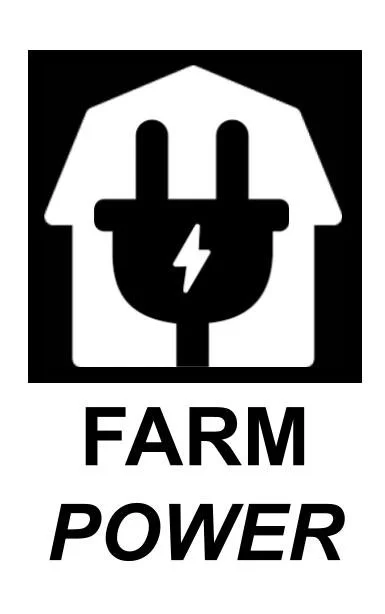
Farm communities thrive …

when farmers thrive.
We work with communities to help farmers explore agrivoltaics — innovative ways to mix farming with renewable energy.
Agrivoltaics
Creative intermixing of agriculture and solar power generation
A way to save farms. Farmers can earn 10x on electricity, compared to most crops, giving them a way to preserve their farms for future generations.
Arrays and farm equipment can co-exist. Single-axis trackers are placed into “hail mode,” standing vertically, and arrays are slightly spread out, allowing space for tractors to work the land.
Many high-value crops prefer partial shade. Examples include broccoli, cauliflower, lettuce, spinach, kale, arugula, radishes, and beets. Herbs like mint, parsley, and chives also tolerate partial shade.These plants reach a “saturation point” for sunlight and thrive with partial protection from the sun, especially in areas that are hot or dry.
Expanding production. Intermixing solar with agriculture can help farmers bring marginal land into production by reducing the need to irrigate.
Soft on the land. Arrays can be mounted on pilings, without concrete, allowing the farmer to plant close to supports, and making it easier to remove the arrays at the end of their life (generally, over 20 years).
Farm look and feel. If they are designed with care, we believe agrivoltaics can be attractive to a community, a natural extension of the farm in modern times.
Red and blue solution. Agrivoltaics are supported by republican leaders such as Iowa Senator Charles Grassley as well as democratic proponents of renewable energy.
What we’re learning
Single-axis tracking systems appear to be most popular and scalable. Researchers are experimenting with different heights and spacing.
A common practice is to plant three rows between the arrays and to space these rows about 20 feet apart.
Researchers are discovering “micro-climates” between the rows. For example, the eastern row receives the most afternoon sun, best for heat tolerant plants (such as tomatoes). The western row receives afternoon shade but good morning light, best for shade-tolerant plants that prefer to be out of the heat, such as greens.
Planting among solar arrays can slow germination and growth, but the crop tends to mature later, providing a unique market when other crops have already bolted.
Some crops that might not otherwise grow in a region can be successful when protected by solar panels. The addition of “shade in motion” and microclimates creates new potential.
Farmers are experimenting with drip watering systems on agrivoltaic farms, though the cost can be prohibitive and many farms prefer to access the rows with equipment. The array itself can be used to distribute rain water and some farmers are experimenting with rain collection / cistern systems.
In developing the site, do not clear all the land with machinery, which compacts the soil. Care needs to be taken to minimize the areas where tractors run, to minimize compaction.
Intermixing solar arrays creates a wealth of research questions and the need for collaboration.
The revenue from energy generation can reduce the financial stress on the farmer, allowing him or her to care for the land, using organic approaches, and care for their community, giving more food away.
Agrisolar presents new challenges for the solar developer, whose motivation is generally to minimize risk (keeping people away from the array) while maximizing revenue per acre (creating dense arrays and minimizing their investment in steel)
The economic need is clear: many farmers work second jobs and most are under pressure to reduce their use of water. But new funding methods are needed to minimize the risk for the farmer as well as the solar developer.
If only 2% of farms in the U.S. installed agrivoltaics, the U.S. would generate 100% of its energy from renewables.
A Network of Research and Power Stations
To advance research and innovation, we are developing a network of facilities across the U.S.., starting with a standard plan and adapting the plan as needed.
Design Features
Solar zones facilitate testing of different agricultural approaches. A control area encourages rigor, helping researchers measure the solar array’s effects. Panels are single-axis, at normal or slightly elevated heights, like large solar farms but more visually pleasing. Battery backup, rain collection and drip irrigation systems will be included as needed. A buffer of trees surrounds the facility, a walking path guides visitors on tours, an event barn fosters conversation and community, and a parking area accommodates visitors.
“We don’t have 20 years to explore agrivoltaics. Our society — and farmers in particular — need rigorous research and regional insight now.”
GOALS
Rapidly investigate a variety of agricultural and solar approaches, examining yields, energy generation, water consumption, soil condition, community perceptions, etc. Encourage creativity, experimental thinking and rapid innovation.
Share best practices with farmers; help them create their vision and take action, integrating solar with food production. Collaborate with other researchers across the world in crafting a research strategy and building a database to support farm innovators.
Save money on existing utilities. We look for existing, contiguous electrical loads and organizations that have large utility budgets to offset.
Generate significant amounts of energy. Show that this works at scale (20-100 acres) not just as a demonstration project. Attract partners who can develop larger projects based on what the community learns and desires.
Make it attractive, feeling like a farm. Create a gathering place where people can learn and collaborate. Show that agrivoltaics can be beautiful if designed with care. Help to shape public perceptions of agrisolar by showing what’s possible when it’s done with community in mind.
Notable Research Programs
Colorado
National Renewable Energy Lab (NREL)
Jordan Macknick is the Lead Energy-Water-Land Analyst for NREL, part of the U.S. Department of Energy.
Oregon
Oregon State University
Chad Higgins in Associate Professor in the College of Agricultural Science
Microclimates
How the panels interact with sun and rain to affect rows planted between the arrays
Colorado
Jack’s Solar Garden
Byron Kominek is owner of Jack’s Solar Garden and Executive Director of Colorado Agrivoltaic Learning Center.
Arizona
University of Arizona
Greg Barron-Gafford is Professor at University of Arizona.
Map of U.S. Agrivoltaic Developments
Click to Explore - Maintained as part of the Department of Energy (NREL) INSPIRE program











